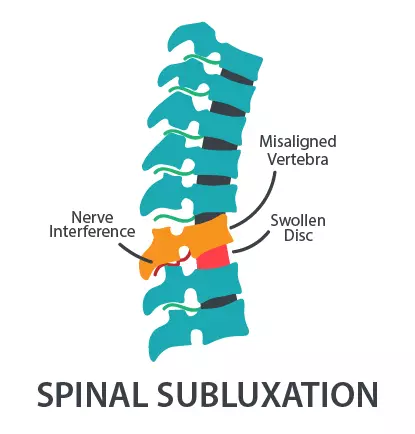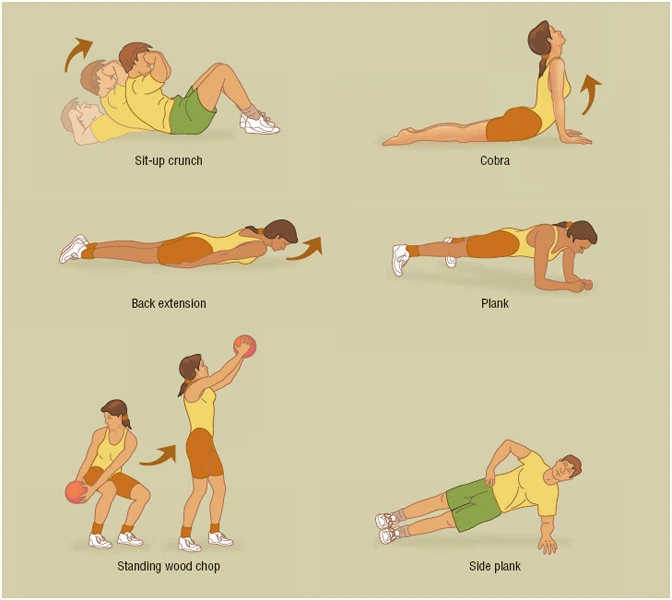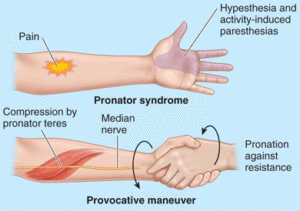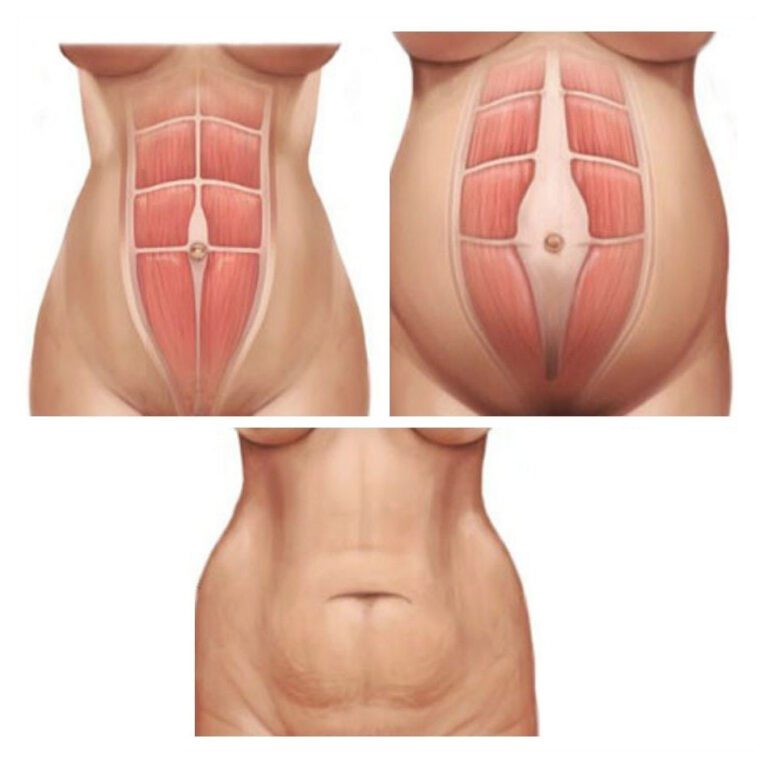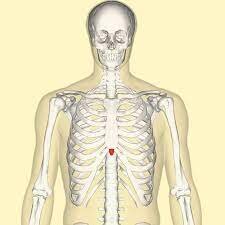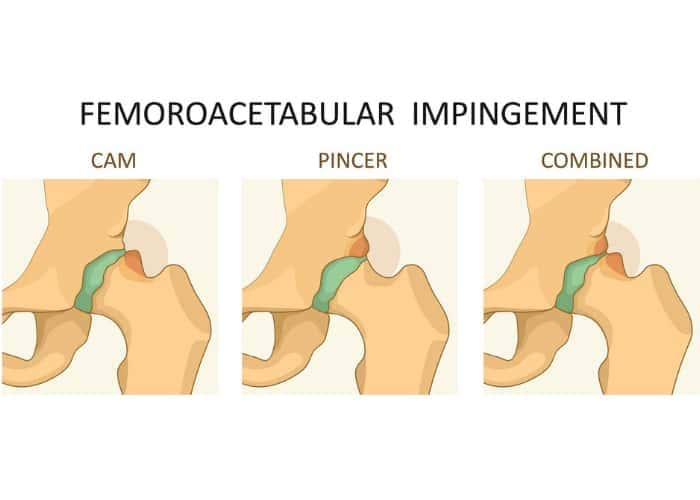Spinal subluxation
Table of Contents
Introduction
Spinal subluxation is a condition that occurs when one or more of the vertebrae in the spine become misaligned or move out of their normal position. This can cause pressure on the nerves and interfere with the normal functioning of the body. While chiropractors and some other healthcare providers believe in the concept of spinal subluxation, the medical community does not consider it a valid medical diagnosis.
Types of Spinal subluxation
There are several types of spinal subluxation, which refers to a partial displacement of the vertebrae in the spine. Here are some of the most common types of spinal subluxation:
- Anterior subluxation: This occurs when the vertebrae slip forward out of their normal position in the spine, typically as a result of trauma or injury. The anterior subluxation can cause compression of the spinal cord or nerves, leading to pain, weakness, and other symptoms.
- Posterior subluxation: This occurs when the vertebrae slip backward out of their normal position in the spine. The posterior subluxation can also cause compression of the spinal cord or nerves, leading to pain, weakness, and other symptoms.
- Lateral subluxation: This occurs when the vertebrae slip to one side or the other, causing the spine to curve abnormally. The lateral subluxation can cause pain, stiffness, and reduced range of motion.
- Rotational subluxation: This occurs when the vertebrae twist out of their normal position in the spine. The rotational subluxation can cause compression of the spinal cord or nerves, leading to pain, weakness, and other symptoms.
Causes of Spinal subluxation
Spinal subluxation, also known as vertebral subluxation, can have various causes, including:
- Trauma: A sudden injury or trauma, such as a car accident, sports injury, or fall, can cause a vertebra to become misaligned.
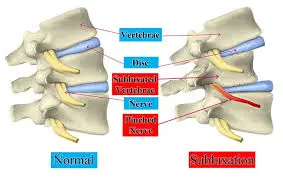
- Poor posture: Maintaining poor posture over time can cause stress and strain on the spine, leading to subluxation.
- Repetitive motions: Repeatedly performing the same movements, such as lifting heavy objects or twisting the spine, can cause spinal subluxation.
- Degenerative changes: As we age, the bones, joints, and ligaments of the spine can undergo degenerative changes, such as arthritis or osteoporosis, which can increase the risk of subluxation.
- Congenital abnormalities: Some people are born with abnormalities of the spine that increase the risk of subluxation.
- Inflammatory conditions: Such as ankylosing spondylitis or rheumatoid arthritis, can cause inflammation and damage to the joints and ligaments of the spine, leading to subluxation.
- Neurological disorders: Neurological disorders, such as multiple sclerosis or Parkinson’s disease, can affect the muscles and nerves that support the spine, increasing the risk of subluxation.
Symptoms of Spinal subluxation
Spinal subluxation refers to a partial misalignment of the vertebrae in the spine, which can cause various symptoms. Some common symptoms of spinal subluxation may include:
- Pain and discomfort in the neck, back, or other affected areas of the spine
- limited range of motion or stiffness in the affected area of the spine
- Muscle spasms or muscle weakness
- Numbness, tingling, or a “pins and needles” sensation in the arms or legs, which depends upon the affected spine
- Headaches, including migraines
- Fatigue or difficulty sleeping
- Digestive issues, such as constipation or diarrhea
- Menstrual problems in women
Diagnosis
The diagnosis of spinal subluxation usually involves a combination of a physical examination, medical history, and imaging tests. Here are some diagnostic methods used:
- Physical examination: A chiropractor or other healthcare provider will typically perform a physical examination, which involves evaluating the range of motion of the affected area, checking for tenderness or swelling, and assessing any muscle weakness or other neurological symptoms.
- Medical history: The healthcare provider will ask questions about your medical history, including any previous injuries or conditions that may have contributed to the subluxation.
- Imaging tests: Imaging tests such as X-rays, MRIs, or CT scans may be ordered to get a better look at the affected area of the spine and determine the extent of the subluxation.
- Other diagnostic tests: Other tests may also be ordered to help rule out other conditions that may be causing the symptoms, such as blood tests or nerve conduction studies.
Once a diagnosis of a spinal subluxation is confirmed, treatment options may include chiropractic adjustments, physical therapy, medication, or, in severe cases, surgery. It is necessary to work with a healthcare professional to determine the best treatment plan for your specific complaint.
Treatment of Spinal subluxation
The treatment of spinal subluxation usually involves realigning the misaligned vertebrae to reduce pressure on the nerves and restore proper function. Here are some common treatment options:
- Chiropractic adjustments: A chiropractor may use gentle, controlled force to adjust the misaligned vertebrae and restore proper alignment.
- Physical therapy: A physical therapist may use exercises, stretches, and other techniques to help improve flexibility, strength, and range of motion in the affected area of the spine.
- Medications: Over-the-counter pain relievers such as ibuprofen or acetaminophen may be used to manage pain and inflammation caused by spinal subluxation.
- Surgery: In severe cases where conservative treatments have been unsuccessful, surgery may be recommended to correct the subluxation and alleviate symptoms.
- Lifestyle modifications: Making lifestyle changes such as improving posture, maintaining a healthy weight, and engaging in regular exercise can help prevent subluxations from occurring in the future.
Physiotherapy Treatment
Conservative physiotherapy management for spinal subluxation typically involves non-invasive techniques to help alleviate symptoms and restore proper alignment. Some common conservative treatments for spinal subluxation include:
- Chiropractic adjustments: A chiropractor may use manual manipulation to realign the vertebrae and reduce pressure on the nerves.
- Physical therapy: A physical therapist may use exercises, stretches, and other techniques to help improve flexibility, strength, and range of motion in the affected area of the spine.
- Massage therapy: Massage therapy can help relieve muscle tension and improve circulation in the affected area.
- Heat or ice therapy: Applying heat or ice to the affected area can help reduce inflammation and relieve pain.
- Electrical stimulation: Electrical stimulation therapy can help improve muscle strength and reduce pain in the affected area.
Post-operative physiotherapy management for spinal subluxation may involve:
- Pain management: Pain medication may be prescribed to manage post-operative pain.
- Early mobilization: Early mobilization is encouraged to help prevent complications and speed up recovery.
- Physical therapy: A physical therapist may design a rehabilitation program to help improve strength, flexibility, and range of motion in the affected area.
- Spinal bracing: A spinal brace may be recommended to provide additional support and stability while the spine heals.
- Gradual return to activities: A gradual return to daily activities, work, and exercise is recommended under the guidance of a healthcare professional.
It is important to work with a healthcare professional to determine the best treatment plan for your specific situation, whether it be conservative or post-operative management.
How to Prevent Spinal subluxation?
Preventing spinal subluxation involves maintaining proper alignment of the spine and avoiding activities that can cause misalignment. Here are some tips for preventing spinal subluxation:
- Practice good posture: Maintaining good posture when sitting, standing, and lifting can help prevent misalignment of the spine.
- Exercise regularly: Regular exercise can help improve flexibility, strength, and range of motion in the spine, reducing the risk of subluxation.
- Lift properly: When lifting heavy objects, use proper lifting techniques to avoid putting unnecessary strain on the spine.
- Maintain a healthy weight: Being overweight or obese can put extra pressure on the spine, increasing the risk of subluxation.
- Avoid prolonged sitting or standing: Prolonged sitting or standing can put pressure on the spine, increasing the risk of subluxation. Take frequent breaks to move around and stretch.
- Seek regular chiropractic care: Regular chiropractic adjustments can help maintain proper alignment of the spine and reduce the risk of subluxation.
By following these preventive measures, you can reduce the risk of spinal subluxation and maintain a healthy spine. If you experience any symptoms of spinal subluxation, such as pain, numbness, or tingling, it is important to seek medical attention promptly.
Conclusion
Spinal subluxation is a condition that occurs when one or more of the vertebrae in the spine become misaligned or move out of their normal position. While chiropractors and some other healthcare providers believe in the concept of spinal subluxation, the medical community does not consider it a valid medical diagnosis. Treatment options may include chiropractic adjustments, physical therapy, or surgery, and prevention involves maintaining good posture and avoiding repetitive motions that strain the back.
FAQs
How do you fix a spinal subluxation?
Spinal subluxation refers to a misalignment or partial dislocation of the vertebrae in the spine, which can cause pain, discomfort, and nerve irritation. The treatment for spinal subluxation depends on the severity of the misalignment and the underlying cause of the problem.
Here are some common treatment options for spinal subluxation:
Chiropractic care: A chiropractor can use manual manipulation techniques to realign the vertebrae in the spine and alleviate pressure on the nerves.
Physical therapy: A physical therapist can provide exercises and stretches to strengthen the muscles supporting the spine and improve flexibility and range of motion.
Massage therapy: Massage therapy can help reduce muscle tension and inflammation around the affected area and promote healing.
Acupuncture: Acupuncture may be helpful in reducing pain and inflammation associated with spinal subluxation.
Medications: Pain relievers, anti-inflammatory drugs, and muscle relaxants may be prescribed to manage pain and discomfort.What does spinal subluxation feel like?
Spinal subluxation refers to a partial dislocation or misalignment of the vertebrae in the spine, and the symptoms may vary depending on the severity and location of the subluxation. Here are some common symptoms of spinal subluxation:
Pain and discomfort: Spinal subluxation can cause pain and discomfort in the affected area of the spine. The pain may be sharp, dull, or throbbing and may be worse with movement or pressure.
Numbness and tingling: Spinal subluxation can cause nerve irritation, which can lead to numbness, tingling, or a “pins and needles” sensation in the affected area.
Muscle weakness: Spinal subluxation can affect the nerves that control the muscles, causing weakness or difficulty moving the affected area.
Reduced range of motion: Spinal subluxation can limit the range of motion in the affected area of the spine, making it difficult to bend or twist.
Headaches: Spinal subluxation in the neck can cause tension headaches or migraines.How long does a subluxation take to heal?
The healing time for subluxation, which refers to a partial dislocation of a joint, can vary depending on the severity of the injury and the specific joint involved. In general, minor subluxations may take a few days to a couple of weeks to heal, while more severe cases can take several weeks or even months.
It is important to seek medical attention for a subluxation, as untreated or improperly treated subluxations can lead to complications such as chronic pain or joint instability. Your doctor or healthcare provider will be able to assess the severity of the injury and recommend an appropriate course of treatment, which may include rest, ice, compression, elevation (RICE), physical therapy, or even surgery in some cases.Does subluxation show on MRI?
Yes, subluxation can show up on an MRI (magnetic resonance imaging) scan. An MRI scan is a non-invasive imaging test that uses a powerful magnetic field and radio waves to produce detailed images of the body’s soft tissues, including bones, muscles, tendons, ligaments, and cartilage. MRI is a very sensitive imaging technique that can detect even small changes in joint alignment or tissue damage.
In cases of subluxation, an MRI can help diagnose the extent of the injury and determine the best course of treatment. It can also help identify any other related injuries or underlying conditions that may be contributing to the subluxation. However, in some cases, other imaging tests such as X-rays or CT scans may also be necessary to fully assess the extent of the injury. Your doctor or healthcare provider will be able to determine which imaging tests are most appropriate for your specific case.What exercises treat spinal subluxation?

In general, exercises that focus on strengthening the muscles around the affected area and improving posture may be helpful in relieving symptoms and preventing future subluxations. Here are some examples of exercises that may be beneficial for spinal subluxation:
Core-strengthening exercises: planks, bridges, and other exercises that target the muscles of the abdomen and lower back can help stabilize the spine and improve overall posture.
Low-impact cardiovascular exercises such as walking, swimming, or cycling can help improve cardiovascular health and overall fitness, which can help support the spine.
Stretching exercises: stretching the muscles around the affected area can help improve the range of motion and relieve tension. Examples include hamstring stretches, calf stretches, and quadriceps stretches.
Yoga or Pilates: These forms of exercise can be particularly helpful for improving flexibility, balance, and posture, which can help prevent future subluxations.
Remember, it’s important to start slowly and gradually increase the intensity and duration of your exercise program over time. Be sure to listen to your body and stop any exercises that cause pain or discomfort. Your healthcare provider or physical therapist can help you develop an exercise program that is safe and effective for your specific needs.

